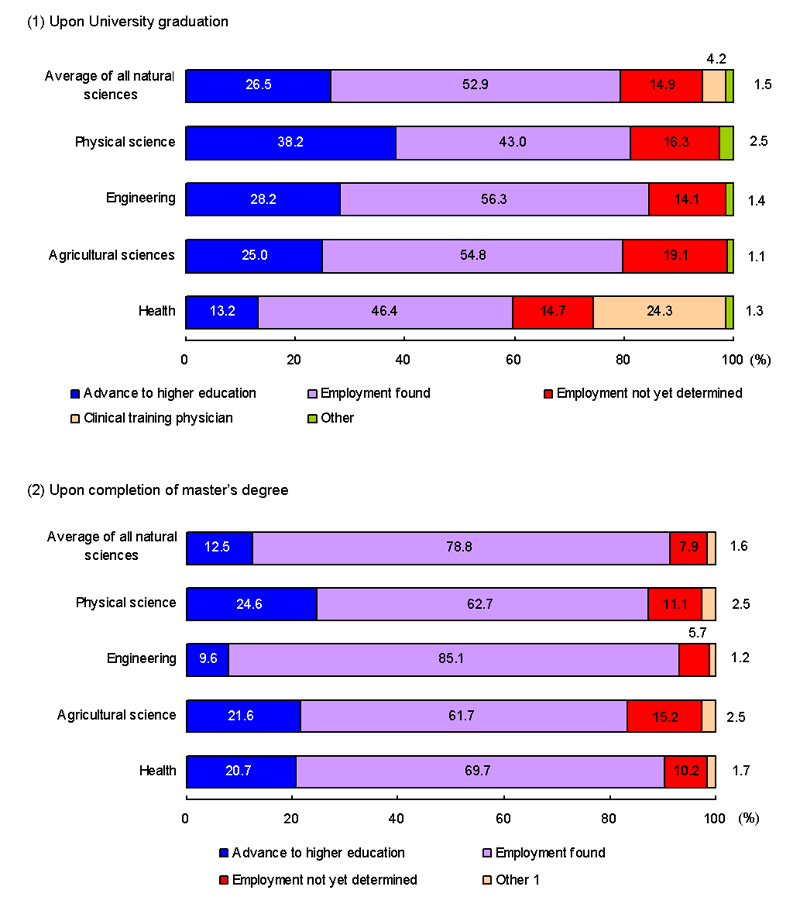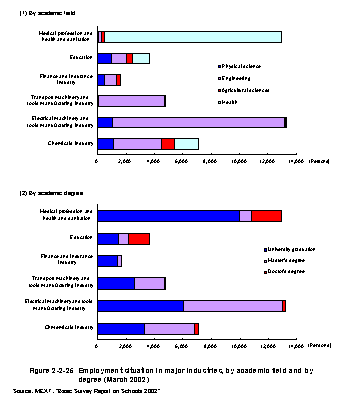| Home > Policy > White Paper, Notice, Announcement > White Paper > WHITE PAPER ON SCIENCE AND TECHNOLOGY2003 > Part2 2.2 2.2.3 2.2.3.2 | ||
In order to enable the utilization of the skills of research personnel who have received a university and/or graduate school education,it is important that they be ensured an easy transition into industry or research institutions,etc.following graduation.
Here,we shall look at the employment situation for Japan's research personnel from the viewpoint of career chosen by people in the natural sciences after graduating from university,or after completing master's or doctor's courses.At the university graduate stage,38.2%of science specialists continue on to graduate work,a proportion that is higher than other specialties.After completing master's degrees,the proportion of engineering specialists that continue on with education drops(to9.6%),with the vast majority(85.1%)turning to employment.After completing doctoral courses,a large proportion(about40%)of people in physical science and agricultural sciences fields do not have definite plans for the time after receiving their doctorates (Figure2-2-24).
If we look at a number of industries to examine their characteristics in terms of which field of the natural sciences their employees tend to come from,manufacturing industries such as the electrical machinery and tools industry,and the transport machinery and tools industry,consist almost entirely of engineering specialists.By contrast,other manufacturing industries such as the chemicals industry takes people broadly from all four fields,physical science,engineering,agricultural sciences,and health sciences.In addition,while the electrical machinery,tools manufacturing and other manufacturing industries have a high proportion of personnel who have completed master's courses,they also have an exceptionally low proportion of people who have completed doctor's courses (Figure2-2-25).


| Back to Top | MEXT HOME |